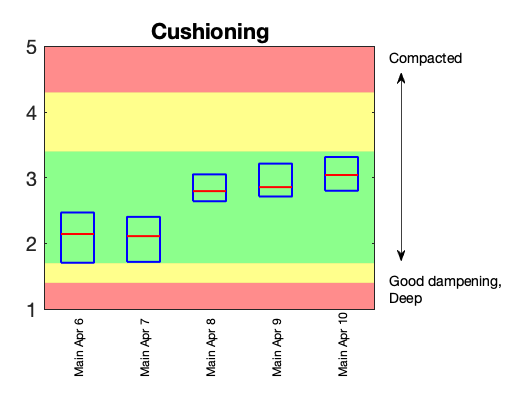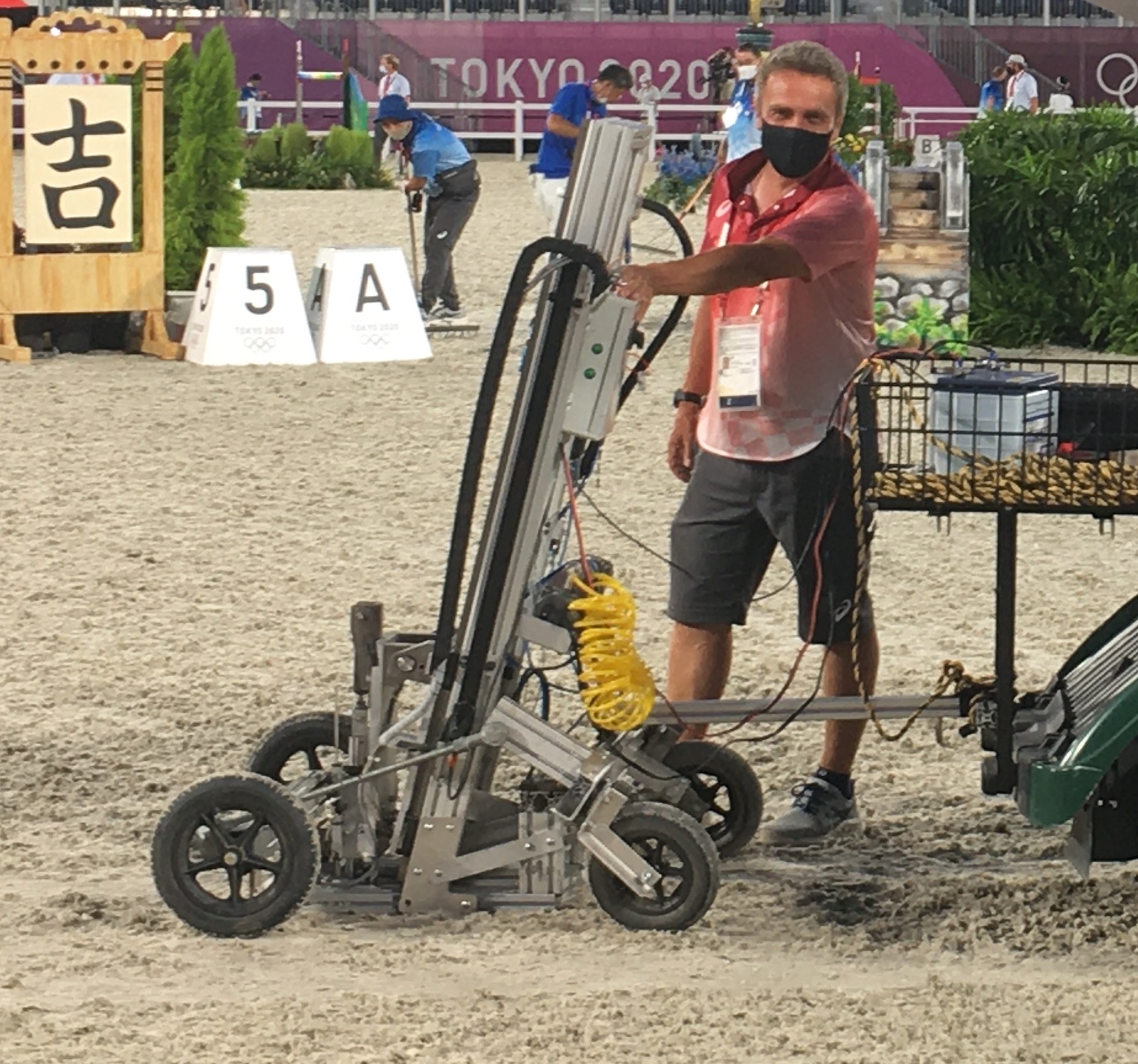The Importance of Footing to the Horse
The condition, properties and quality of the surface that a horse is ridden on are an essential aspect of horse health, welfare and performance. The quality of an equestrian surface, whether it be grass, sand-based or any other, greatly impacts the horse’s movement, posture, and balance, and as such, careful selection and maintenance is vital both in the training and competition environment.
FEI Footing Standard
Acknowledging the critical importance of providing the best possible conditions for horses to train and compete on, the FEI led work to establish a scientific based approach to analysing and evaluating footing leading to the introduction of an FEI Footing Standard.
The science that underpins the FEI Footing Standard is summarised in the Equine Surfaces White Paper which can be downloaded here. In 2015 this was presented to a forum of the world's leading equine surface suppliers and experts. A consensus emerged at this forum that standards and education should be developed around the three key components of correct material and design, proper installation and appropriate maintenance. A summary of the forum is available here.
The FEI Footing Standard is based on the alignment of objective measurement of footing properties with subjective evaluations of top riders and trainers. The objective testing of footing is carried out using a machine called the 'Orono Biomechanical Surface Tester (OBST), otherwise known as the 'mechanical hoof'. The standard is comprised of four properties and a fifth measure combining multiple readings to give an evaluation of uniformity across the entire arena/area being measured. The five elements of the FEI Footing Standard are therefore:
- Property 1 - Impact Firmness: The shock experienced by the horse and rider when the hoof contacts the surface.
- Property 2 - Cushioning: How much a surface is supportive compared to how much it gives when riding on it.
- Property 3 - Responsiveness: How active or springy the surface feels to the rider.
- Property 4 - Grip: How much the horses’ foot slides during landing, turning and pushing off.
- Property 5 - Uniformity: How regular the surface feels when the horse moves across it.
The results of testing for each property are illustrated using a green/yellow/red 'traffic light' bar chart system. A result in the red zone represents in theory a rider giving a very low score, the yellow zone a better score, and in the green zone the best scores. An example is below and shows how results can change from day to day due to factors such as weather, usage and maintenance.

Full details of the the FEI Footing Standard are captured in a single document which is available to download here.
Application of the FEI Footing Standard
The testing methodology outlined here, and resulting FEI Footing Standard have been applied at multiple major events, Championships, Olympic, Paralympic and other multi-sport Games in recent years. It is relatively rare for footing that has been supplied, installed and maintained at such events by professional and experienced entities to measure outside the green zone. However the testing results have been most usefully applied to inform maintenance programmes in order to fine tune footing performance on a day by day basis to deliver the very best possible conditions for the perfomance and welfare of the competing horses.
At many of these events daily reports have been produced and made available to riders, trainers and teams so that they are aware of the footing status for each competition. An example of such a report can be seen here.
More detailed reports and recommendations can be provided to the event organiser and/or footing supplier/maintenance team. One such report can be downloaded here.
Any organiser, trainer or rider interested in commissioning footing testing for their home, training or competition arenas should contact the FEI Games Operations department here.
Ongoing Scientific Study
Equestrian surfaces and their impact on performance, health and welfare, the environment, sustainability and other aspects is ongoing around the world. The FEI continues to support a number of projects and studies. Here are various documents, papers and other information regarding research and studies relating to equestrian surfaces.
- Racing Surfaces Research and Testing - racingsurfaces.org
- Scientific Paper - Equestrian Surface Sand Specifications
- Scientific Paper - Microplastics in Equestrian Fibresand Surfaces
Footing Advisors
For the Olympic/Paralympic Games, FEI Championships, and some other major events, a Footing Advisor (independent of the footing supplier) is often appointed to oversee and advise on footing design, testing, installation and maintenance. A template job description of the Footing Advisor is available here. Other event organisers may wish to consider appointing such an advisor and can use this job description in so doing.
Other Documents & Resources
- FEI Footing Project History
- FEI Footing Forum 2015 - Meeting Summary
- FEI Footing Project Update - Dec 2016
- Equestrian Surfaces - A Guide
Any questions?
If you have any questions regarding organising FEI competitions or would like further advice not available through this guide please contact your National Federation or the relevant FEI department here.
Attached files: Footing Project History.pdf, FEI Standard for Arena Surfaces - Meeting Summary.pdf, Footing Update 12_2016.pdf, ArenaBulletin1.pdf, Ridunderlag_guide_eng_2021_november.pdf, Job Description - FEI Championship Footing Advisor_Jan 22.pdf, FEI Footing Standard - Jan 2022.pdf, Microplastics in equestrian fibresand arenas-report.pdf, Omaha main Apr 5-8.pdf, FEI Footing Standard In-situ Test Report_LFJWC Helsinki_20-23 Oct 2022.pdf




